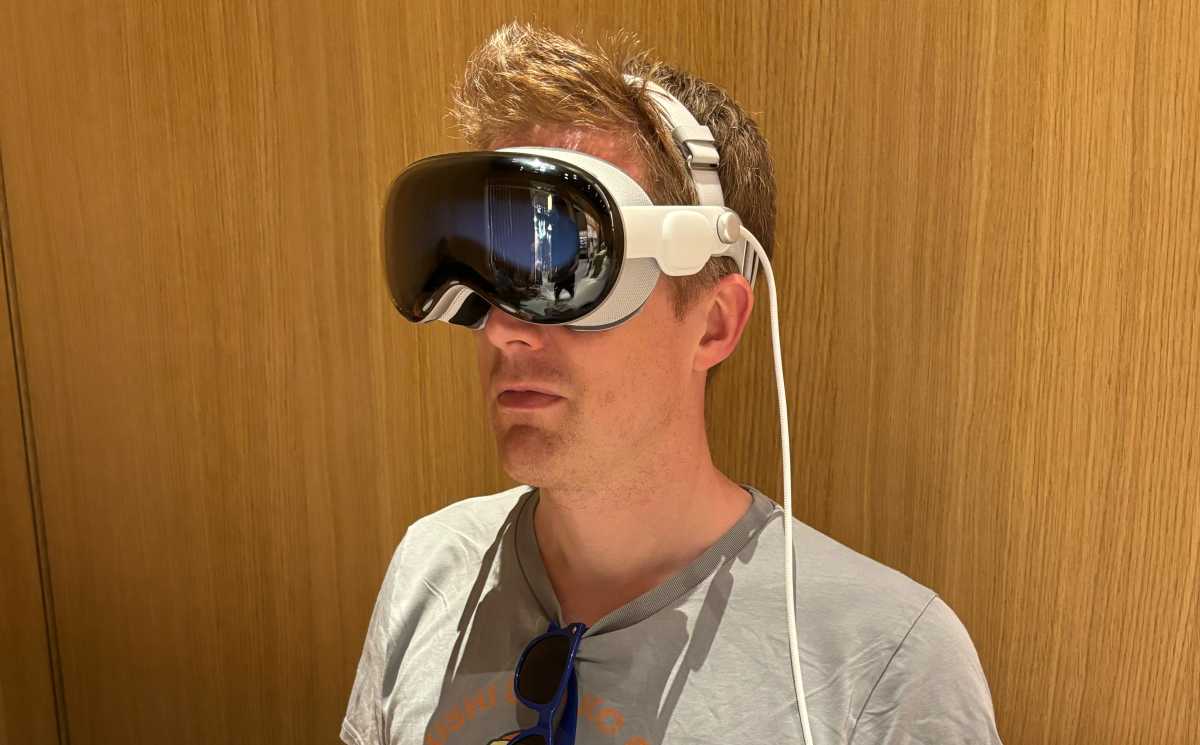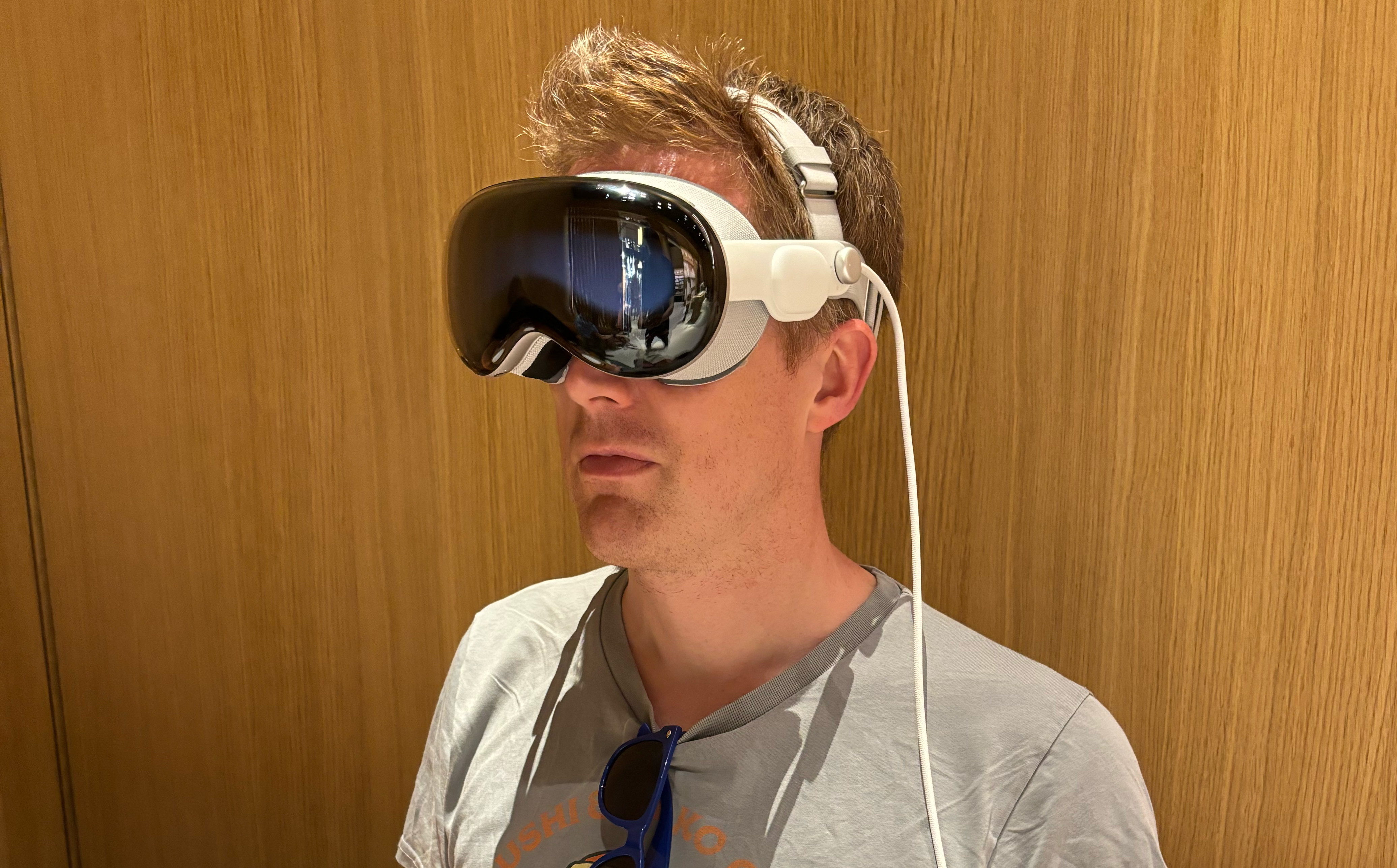Parenting has many challenges, but the worst, in my opinion, is when your child refuses to eat a delicious food they’ve never tried. Try it, you beg, with tears in your eyes. Everyone loves halloumi.
Not that adults are much better. We’re slightly more likely to give unfamiliar foods a chance, I suppose, but unfamiliar people, places, and political viewpoints? Good luck with that. Unfamiliar technology, too. iPhone users: when was the last time you tried Android?
This all came to mind last week when I finally got a chance to try out Vision Pro, Apple’s mixed reality headset. (It launched in the US in February, but only recently became available for sale and demo here in the UK.) Everyone has an opinion about Vision Pro, which was publicly announced as early as June last year, but very few people seem willing to put those opinions to the test.
And trust me, the Vision Pro demo is truly eye-opening. Because of the lack of any useful parallel (it has nothing to do with using an Oculus or any other VR product on the market), it’s extremely difficult to describe what the experience is like. I can describe the basics, like the eye tracking and finger taps needed to navigate the interface, but that doesn’t convey what it feels like, or how those sensations evolve as you get used to the device. You’ll just have to experience it for yourself.
Personally, I was surprised by the complexity of the fitting process and how difficult it was to get the Light Seal and headband to the optimum fit. A facial examination is supposed to help with this, but my first seal had to be sent back and replaced. Then it was just a matter of tightening the straps just right so that the weight was distributed comfortably across your forehead and cheeks, which is harder than you might think, and took some time and multiple checks before everything was set just right. This may sound like a complaint, but I was impressed by the commitment and patience that went into making sure the product was at its best for the demo.
Because the wait was definitely worth it. Using Vision Pro is a strange but totally immersive experience, thanks to the carefully calibrated fit and exceptionally high-quality hardware. There were several moments during the demo where I gasped, laughed, or looked around excitedly like a tourist, simply because the headset does such a good job of making you feel like you’re inside its rig. The homemade space movies of aliens could have seemed artificial (anyone who’s seen the unsettling 1995 thriller Strange Days (I’ll pretty much know what I mean), but the effect is so compelling that it made me think about my own memories and what it would be like to relive them in this format. It was oddly poignant.
Hollywood will also be watching the advances in space video with great interest. The demo included a stunning video peppered with close-ups of dinosaurs and rhinos. No doubt someone is already doing the math to see if a superhero movie in this format would be profitable. Even 2D movies look great in Vision Pro’s virtual cinema, and I imagine long-haul flights will be greatly improved if you remember to bring your headset and a pair of AirPods.
Those who can no longer afford to attend large concerts will find this format an alternative. As for watching sporting events in a spatial format… that might be a longer-term prospect, but the potential is huge. All of this will take time and require significant investment, but Vision Pro presents an incredible opportunity to bring events to people rather than selling a limited number of tickets.

David Price / Foundry
The multimedia side is therefore a triumph for the Vision Pro. But it is also important to cover the more difficult aspects, such as the unfamiliar control method mentioned above. Once again, Apple’s patient expert had to hold my hand, metaphorically, because I think the interface would have been confusing without assistance. Moving over the years from iPod to iPhone, from iPad to Apple Watch, has always seemed like a natural and intuitive evolution, but the Vision Pro is completely new.
To select an icon, you have to look at it and then tap your thumb and index finger together. Both of these things were a source of mild stress for me, especially at first. I’ve always had a strong aversion to the idea of eye-tracking technology, which feels intrusive and dystopian in a way I can’t quite explain. And I was also anxious about gesture recognition, partly because of my tendency to fidget and partly because of my general worry about getting it wrong. There’s just, for me, a low-level, ongoing anxiety about my hand and eye movements being constantly monitored.
But the problem is, it gets better quickly. My stress had diminished considerably by the end of the demo, while my enthusiasm for the immersive media elements had not diminished. That’s why it’s so important to test Vision Pro for yourself: you don’t know which parts you’ll like and which you won’t until you try it, and you don’t know whether those effects are temporary until you try it. correctly.
I hope my thoughts go some way to helping you understand what Vision Pro is all about. (You can read a much more comprehensive account in our Vision Pro review .) But the message I want you to take away is that, more than any other Apple product, this is something you have to decide for yourself. And to do that, you have to book a demo and eat that bloody halloumi.









